Meet Japanese Dogs! Native Breeds, Dog-Themed Facilities, and More

Japanese dog breeds such as the Shiba and Akita are renowned globally but there are many other native breeds with unique features. We introduce them along with places where you can interact with Japanese dogs, dog festivals, dog-friendly spots, and other dog-related information.
Japanese dogs have captured global attention with their charming features and playful personalities. Delve into the distinctions between Akitas and Shibas, and explore Japan's native dog breeds, each showcasing distinct characteristics.
We also introduce dog-friendly spots, from Tsukuba Wanwan Land, home to 500 furry friends eager to meet you, to the enchanting experience of encountering Akita dogs frolicking in the snow. Additionally, discover dog fashion shopping spots and dog-friendly gardens, essential destinations for both devoted dog owners and enthusiasts.
Japanese Dog Guide
The Six Japanese Dog Breeds
1. Akita
2. Shiba
3. Kishu
4. Hokkaido-ken
5. Kai-ken
6. Shikoku
Other Dog Breeds from Japan
7. Tosa
8. Japanese Chin
9. Ryukyu
10. Japanese Spitz
11. Japanese Terrier
Differences Between Akita and Shiba Dogs
6 Places to Interact with Dogs in Japan
Dog Goods, Fashion, and Shopping Spots
Dog-Friendly Parks and Facilities in Japan
Japanese Dog Breeds
In Japan, a rich spectrum of dog breeds has either evolved within the country or emerged through unique crossbreeding, resulting in novel breeds that are distinctly Japanese.
Currently, the following six are officially recognized as Japanese dog breeds and protected by the Japanese Dog Preservation Society: Akita, Shiba, Kishu, Hokkaido, Kai, and Shikoku.
In this section, we delve into the distinctions among these dog breeds and introduce a few others that, although not recognized as Japanese, are nonetheless charming.
1. Akita Dogs

Photo by Pixta
The Akita, designated as the National Dog of Japan, stands as the largest among Japan's six native breeds, towering between 58-70 cm in height. In terms of weight, males typically range from 32-39 kg, while females generally weigh between 23-29 kg.
Originating from the snowy northern mountains of Akita Prefecture in Japan, these majestic canines have served as remarkable companions for generations. Renowned for their formidable strength and robust muscle mass, these dogs once played a crucial role in hunting, fearlessly confronting bears in the wild.
Loved for their loyalty, these gentle giants stand out as exceptional family companions, celebrated throughout history for their steadfast devotion and bravery. Their versatile nature is evident in their past roles as guard dogs for samurai and as search and rescue dogs during World War II.
One of the most renowned tales showcasing their loyalty is that of Hachiko, the famous Akita who faithfully waited at Shibuya station for his deceased master's return, captivating hearts worldwide.
Recognized as a Japanese Natural Monument, the Akita symbolizes happiness, longevity, and well-being. These magnificent dogs effortlessly captivate onlookers with their striking presence, leaving a lasting impression on all who encounter them. It is no wonder that many visitors to Akita are eager to meet these beautiful creatures.
2. Shiba Dogs

Photo by Pixta
Shiba dogs have experienced a meteoric rise in popularity in recent years. These captivating canines, resembling foxes with their charming demeanor and striking appearance, have garnered a massive following. Renowned for their playful antics and endearing visuals that often blur the line between dogs and foxes, Shiba owners delight in sharing anecdotes of their quirky, cat-like independence and amusing behaviors through captivating reels and photos.
This online phenomenon has spawned a devoted community of Shiba enthusiasts who adore viral sensations like DOGE and captivating figures such as the Shiba Inu Cashier, who charmingly operates at a cigarette shop.
The Shiba, standing at around 40 centimeters tall and weighing between 6.8 - 11 kg, is recognized as the smallest among Japan's six native breeds. Thanks to their distinctive fluffy brush-like tail, they have affectionately earned the moniker "brushwood dog."
Shibas are characterized by their loyalty, alertness, and independence, traits that can sometimes manifest as stubbornness. Nevertheless, they form deep attachments to their owners and have a historical background as adept hunting companions for smaller prey.
Hailing from the Chubu region, Shibas are believed to have existed since 7000 B.C. Despite facing near-extinction during World War II, concerted efforts were made to safeguard the breed from disappearing entirely.
Renowned for their striking red sesame fur, these endearing dogs also come in white, black, and tan variations, with their unique coloring often likened to circled eyebrows, showcasing the diversity and charm of the Shiba breed.
3. Kishu Dogs

Photo by Pixta
The Kishu, originating from the former Kishu Region, now encompassing Mie and Wakayama prefectures, is a medium-sized dog traditionally utilized by locals for hunting boar, rabbits, and other woodland creatures.
Compared to the more popular Shibas, Kishus are relatively rare globally. While some may struggle to distinguish between the two breeds, Kishus are slightly larger, standing at 43-55 cm and weighing between 14-27 kg. Although Kishu dogs come in various colors similar to Shibas, contemporary breeding practices have predominantly favored white fur, a practical choice for spotting these dogs amidst forest environments during hunts.
With an estimated age of at least 3,000 years, Kishus are steeped in legend, tracing back to a mysterious tale where a man aiding an injured wolf received one of its offspring as a gift. This folklore links Kishus to direct wolf ancestry.
Exceptionally scarce, there are only approximately 10,000 to 13,000 Kishu dogs remaining. Their endearing appearance as puppies, reminiscent of polar bear cubs, often captivates many admirers, further enhancing their allure and mystique.
4. Hokkaido Dogs

Photo by Pixta
The Hokkaido dog breed, also referred to as the Ainu dog, traces its roots back to Hokkaido. This medium-sized breed, weighing approximately 20-30 kg and standing 46-52 cm tall, strikes an ideal balance in size among Japan's six native breeds. Renowned for their amiable and playful nature, Hokkaido dogs exhibit exceptional loyalty and guardianship, making them well-suited as family pets and protective companions.
Distinctive physical traits include small, pointed triangular ears, compact triangular black eyes with a subtle brow ridge, and a sturdy upper body that tapers towards the rear. Throughout history, they have served various roles, from hunting partners to adept members in search and rescue operations.
Their fur displays a spectrum of colors, ranging from brindle to black and tan hues. Believed to have migrated from mainland Japan around 1140, these dogs settled in Hokkaido, solidifying their presence on the island and contributing to their enduring legacy.
5. Kai Dogs

Photo by Pixta
Sporting a distinctive brindle coat that effectively camouflaged them in forested settings since ancient eras, the Kai emerges as a rare breed hailing from Yamanashi Prefecture.
Revered for their historical role as hunting allies, these canines boast remarkable energy and intellect, traits that can present training challenges; however, once properly trained, they prove fiercely loyal and protective of their loved ones, embodying excellent companionship qualities.
The Kais have the purest lineage among Japan's six native breeds and thrive in the mountainous regions neighboring Mt. Fuji. Their appellation, translating to "tiger dog," reflects the mesmerizing stripes adorning their coats. Scarce even within Japan, these dogs typically weigh between 11 to 25 kg and stand at heights ranging from 45 to 56 cm.
6. Shikoku Dogs

Photo by Pixta
Originating in Kochi Prefecture, the Shikoku dogs are regarded as one of Japan's national treasures, revered for their role in upholding the nation's cultural legacy. Belonging to the quartet of medium-sized dogs among the six native breeds, the Shikoku stands as a vital component of Japan's esteemed canine heritage.
Noted for its distinctive coat variations, a Shikoku can exhibit hues of red sesame or black sesame fur, with a hallmark white underbelly extending along the legs and muzzle.
Standing approximately 43-55 cm tall and weighing 16-25 kg, these dogs feature notable fox-like facial characteristics, pointed ears, and a luxuriously curled tail, culminating in a striking and unmistakable appearance that distinguishes them within the realm of Japanese dog breeds.
7. Tosa Dogs

Photo by Pixta
The Tosa, also recognized as the Japanese mastiff, traces its origins to Kochi Prefecture and has a historical association with dog fighting, a practice that has endured for decades. The Tosa is the sole remaining breed sanctioned for fighting in Japan. Over time, breeders have introduced European influences, such as Saint Bernards and Great Danes, to enhance the Tosa's stature and weight, attributes valued in combat scenarios.
Typically weighing between 60-90 kg and standing at heights ranging from 62-82 cm, contingent upon gender, Tosas present a sleek coat that may display shades spanning from brown brindle to red or black.
Depictions and photographs of these dogs often grace Yokozuna, a traditional sumo garment symbolizing victory, prestige, and honor. This garment serves as a distinguished accolade akin to a medal or trophy for the champion Tosa, accentuating the breed's historical significance in the realm of competitive dog fighting.
8. Japanese Chin

Photo by Pixta
Embraced by royalty in various European nations, the Japanese Chin's precise origins remain a topic of debate, with theories circulating regarding their introduction in 732 from Korea. Despite these historical speculations, the breed has established a rich legacy in Japan and beyond, ultimately acquiring their distinctive moniker as they journeyed to Western lands.
Renowned for their cat-like characteristics and behaviors, Japanese Chins often evoke associations with feline traits, a resemblance that resonates strongly with observers. These charming canines excel as affectionate lap companions, boasting lusciously fluffy coats and exhibiting grooming habits akin to cats, using their paws for self-cleansing.
Featuring a range of color combinations like black and white or red and white, Japanese Chins feature a distinguishing white forehead stripe believed to be a mark left by Buddha, underscoring the breed's cultural significance and mystique.
9. Ryukyu Dogs
Hailing from the Ryukyu Islands of Japan, the Ryukyu stands as a rare and ancient breed characterized by a medium build, typically measuring between 15-20 inches in height and weighing 30-55 pounds. These canines have a dual-layered coat that showcases an array of shades including black, red, sesame, and brindle.
While they may exhibit reserved behavior around strangers, Ryukyu dogs display deep affection and loyalty toward their families, underscoring their role as steadfast companions. These dogs are known for their loyalty, sharp intellect, and innate protective instincts.
Requiring adequate physical exercise and mental stimulation to flourish, these dogs exemplify high trainability and boast a life expectancy spanning 12-15 years, rendering them a rare treasure esteemed for their distinct history and cultural significance within their native land.
10. Japanese Spitz

Photo by Pixta
Resembling a white fluffy bundle of joy, the Japanese Spitz is a medium-sized, fox-like dog brimming with energy and inquisitiveness. These lively canines possess a deep affection for family and a zest for adventure, rendering them perfect travel companions.
Bearing a striking resemblance to a miniature Samoyed, the Japanese Spitz stands at around 33 cm in height and weighs between 5-9 kg. Originating in Japan in 1920, this breed was crafted through the intentional cross-breeding of various Spitz dogs, culminating in the creation of this endearing and spirited companion.
11. Japanese Terrier
The Japanese Terrier traces its origins back to the 17th century when it was meticulously developed through the cross-breeding of smooth fox Terriers introduced by the Dutch in Nagasaki.
These small and slender dogs typically weigh between 2.3 – 4.1 kg, boasting endearing black folded ears and facial fur, contrasted by their striking all-white bodies. Known for their cheerful demeanor, intelligence, and quick trainability, Japanese Terriers form strong bonds with their families.
Esteemed for their role as adept watchdogs, these terriers are a rarity outside Japan, prized for their unwavering loyalty and vibrant personalities that vividly reflect their Japanese heritage. Their unique characteristics and origins contribute to their allure, making them cherished companions with a distinct charm deeply rooted in Japanese culture.
Differences Between Akita and Shiba Dogs
Akitas and Shibas, though often confused due to their similar appearance, possess distinct characteristics that set them apart significantly.

Photo by Pixta
Akitas are larger and robust dogs, standing approximately 64-70 cm in height, with a weight ranging from 23 to 39 kg, varying based on gender.
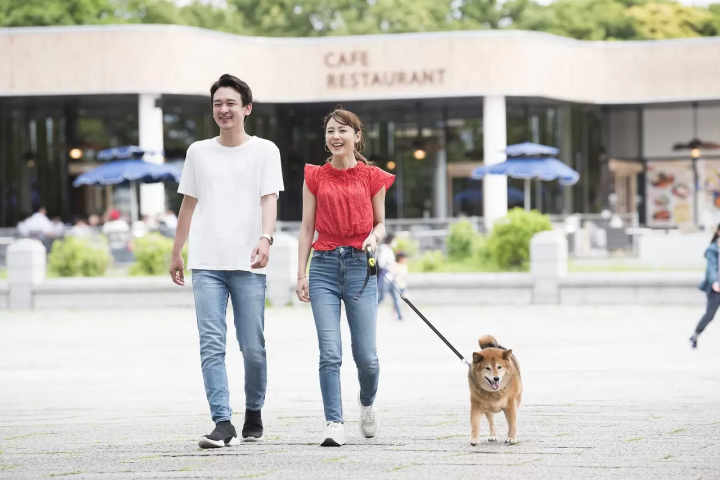
Photo by Pixta
On the other hand, Shibas are noticeably smaller, typically standing between 35 to 43 cm tall and weighing 8 to 10 kg, categorizing them as a small to medium-sized breed that is more manageable in terms of size.
When seated beside a Shiba, they will likely reach below your shoulder level, whereas Akitas may surpass even your height, underscoring the considerable disparity in size between the two breeds.
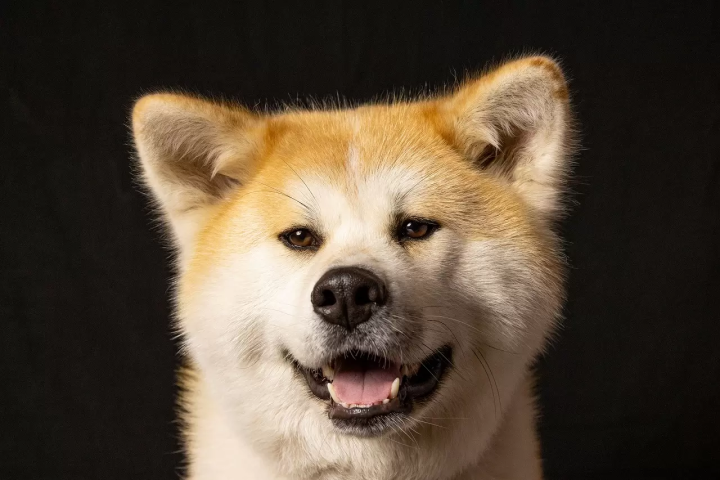
Photo by Pixta
Distinct in more than just their weight and height, Akita dogs are easily recognizable by their unique facial features, characterized by squashed, square-like faces, substantial jowls, and wide-set, pointed yet round ears. Their temperament tends to reflect their imposing appearance, with a typically laid-back and composed demeanor.
In contrast, Shiba dogs exhibit a different energy level and personality. Renowned for their vibrant nature, they are known to be energetic and adventurous, earning a reputation for being spirited and sometimes even diva-like, especially in the online sphere.
While both breeds share qualities like loyalty, independence, and devotion to their families, their historical roles in hunting differ significantly. Akitas were esteemed for their strength and muscle mass, often deployed for hunting bears and serving as steadfast protectors for samurai and affluent landowners.
In contrast, Shibas, originating from western Japan with diverse bloodlines, were skilled in tracking and hunting smaller prey, showcasing their agility and versatility in hunting tasks.
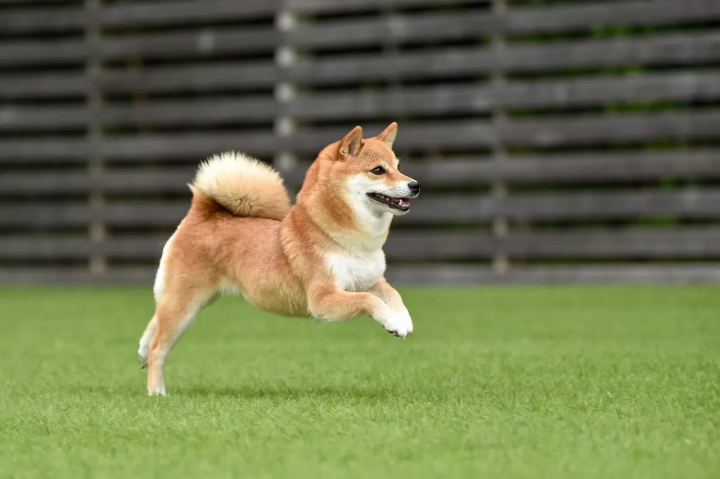
Photo by Pixta
TEST: Is the dog in the picture above an Akita or a Shiba?
Check your answer at the end of the article.
6 Places to Interact with Dogs in Japan
From places like the Akita Dog Visitor Center and dog-themed parks like Tsukuba Wanwan Land to dog festivals, there are plenty of locations in Japan where you can interact with dogs and learn more about Japanese dog breeds.
In particular, Akita Prefecture is a paradise for dog enthusiasts, featuring a total of 12 unique locations where visitors can connect with these beloved dogs.
1. Yuzawa Inukko Dog Festival
Annually held in the snowy Yuzawa City of Akita prefecture each February, the Yuzawa Inukko Dog Festival unites dog enthusiasts and owners in a grand celebration of all things canine!
Originating from a town plagued by burglaries during the Edo period (1603-1868), locals initiated a custom of offering miniature dog statues and rice as protective measures against misfortune and malevolent forces. Over time, this tradition evolved into a vibrant festival featuring a diverse range of attractions, from traditional snow dog sculptures adorning snow shrines and lanterns to contemporary additions like dog cafes, runs, and lively yosakoi dance performances.
The Yuzawa Inukko Dog Festival delights attendees by showcasing a wide variety of dog breeds. Past editions have seen approximately 700 dogs partake in the festival's two-day revelry, offering a delightful spectacle for all to enjoy.
Yuzawa Inukko Dog Festival
Venue: Yuzawashi General Gymnastics (140 Okitsuru, Yuzawa City, Akita Prefecture) MAP
Dates: Second Saturday and Sunday of February every year
Website: https://www.tohokukanko.jp/en/attractions/detail_10021.html
2. Yokohama Gogo Dog Fes

Photo by PR Times
Yokohama Gogo Dog Fes held at the picturesque seaside Rinko Park is an annual extravaganza celebrating all things canine, featuring events in both autumn and spring in the past.
This vibrant festival brings together dog owners, furry companions, and the public, infusing the park with joy and entertainment. Attendees can partake in a thrilling photo contest, savor delectable food and beverages, explore goods offered by over 120 market stalls and dog cafes, and forge connections at the dog meet.
Distinguished as one of Japan's premier outdoor dog events, Yokohama Gogo Dog Fes serves as a haven for dogs, offering an array of engaging activities ranging from grassy dog runs, races, and agility challenges to opportunities for relaxation and pampering at exhibition booths that provide services such as massages, acupuncture, and chiropractic care.
Located conveniently close to Tokyo, this event presents an easily accessible day trip option for those seeking a day filled with canine charm.
Yokohama Gogo Dog Fes
Venue: Rinko Park (1 Minatomirai, Nishi Ward, Yokohama, Kanagawa) MAP
Dates: April 20 - 21
Website: https://www.yokohama55fes.com/
3. Shiba Festival

Photo by Pixta
The annual Shiba Festival, held at Yoshimi General Sports Park in Saitama, just an hour's drive from central Tokyo, is a must-visit event for Shiba Inu enthusiasts and owners alike.
This lively festival welcomes dog owners and their Shiba companions to partake in an array of activities including competitions, agility courses, dog runs, training sessions, and a marketplace vending dog merchandise and delectable treats. The festival, originating in 2020, has swiftly become a haven for Shiba lovers, with the 2024 edition seeing over 400 Shibas participating in the festivities!
Perfect for Shiba owners in Japan seeking camaraderie and fun experiences, this event offers an excellent opportunity to meet fellow Shiba enthusiasts. Stay informed about upcoming festivals and additional events by visiting the official website or connecting with the festival's social media platforms, such as Instagram.
Shiba Festival
Venue: Yoshimi General Sports Park, Saitama City MAP
Dates: February 10, 2024
Website: https://www.freestitch.jp/meetup/shiba-festival-2024
4. Akita Inu Fureaidokoro in Senshu Park
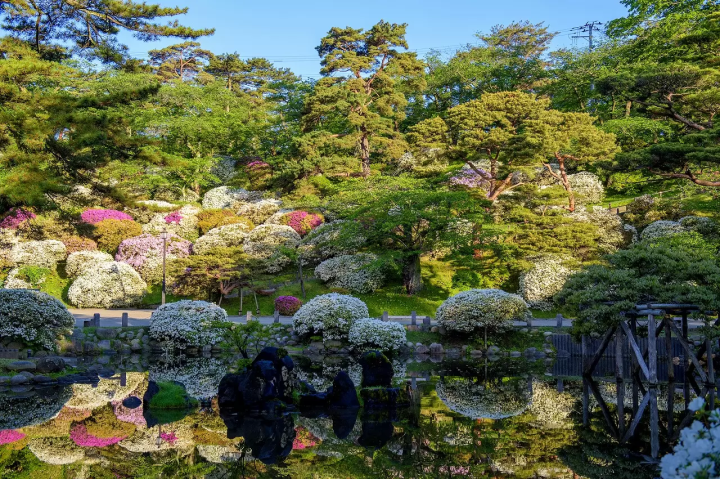
Photo by Pixta
Located within Senshu Park in Akita, the Akita Inu Fureaidokoro is a facility operated by the Akita Dog Preservation Society, offering visitors a unique opportunity to engage with Akita dogs.
Each day from 11:00 to 15:00, visitors can encounter at least one Akita dog leisurely enjoying the park's serene environment. Alongside this delightful canine experience, guests can bask in the beauty of the park, featuring 700 cherry blossoms in spring—a highlight that has earned it a spot among Japan's top 100 cherry blossom locations—as well as stunning autumn foliage, a stone castle, exquisite gardens, and much more!
The Akita dogs at the facility are under the watchful care of diligent professionals who ensure the dogs' comfort and well-being at all times. While visitors are encouraged to view and interact with the Akita, availability for petting may vary based on the dogs' health and mood on any given day.
Please note that operational hours and dog availability may be subject to change, with dogs potentially being absent during certain seasons. It is advisable to verify schedules before planning a visit.
Akita Inu Fureaidokoro in Senshu Park
Location: Senshukoen 1, Akita City MAP
Hours: 11:00 - 15:00
Website: https://www.akita-yulala.jp/en/see/akita-dog-fureaidokoro-in-senshu-park
5. Akita Dog Visitor Center

Photo by Pixta
Located in Odate City, the hometown of loyal dog Hachiko, the Akita Dog Visitor Center is a delightful destination encompassing all things Akita. Standing faithfully outside the building is the iconic Hachiko statue, reminiscent of Hachiko's counterpart in Shibuya, facing toward Odate Station.
The exterior of the Akita Dog Visitor Center boasts Akita-themed décor and a park featuring Akita spring riders, while indoors, visitors can delight in Akita teddy bear photo spots and explore the Akita Dog Museum, along with various Akita-themed goods in the main hall.
Within the Akita Inu exhibition room, real Akita dogs frolic and relax from 9:30 to 16:45, offering a glimpse into the beloved breed. Photography is welcome, with the gentle reminder to avoid using flash to ensure the dogs' comfort.
Further amenities include a tourist information center, a railroad park, and the intriguing Aogaeru, a static train exhibit. For more information and to plan your visit, please explore the official website for a detailed overview of the center's offerings.
Akita Dog Visitor Center
Location: 1-13-1 Onaricho, Odate, Akita MAP
Hours: 9:00 - 17:00
Website: https://akitainunosato.jp/
6. Tsukuba Wanwan Land

Photo by Klook
Tsukuba Wanwan Land stands as a canine utopia nestled in Ibaraki, offering a short journey from central Tokyo to a paradise for dog enthusiasts. Marked by a trojan horse-like structure, this park houses approximately 500 amiable dogs of diverse breeds.
Visitors can engage with these furry companions through various activities, including interacting with breeds ranging from toy poodles to Great Danes, utilizing the dog rental service, relishing moments at the petting facility Fureai Hiroba, and even cuddling puppies at the Puppy Exhibition Hall.
In addition to mingling with these delightful canines, guests have the opportunity to observe dog training sessions to witness new tricks, enjoy watching them participate in races, and partake in a relaxing and therapeutic experience amidst these furry friends. Tsukuba Wanwan Land provides a unique and joyful setting for dog lovers to connect with and appreciate the charm of man's best friend.
Tsukuba Wanwan Land
Location: 579 Numata, Tsukuba, Ibaraki MAP
Hours: 10:00 - 17:00
Website: https://wanwan-land.co.jp/en
4. Dog Goods, Fashion, and Shopping

Photo by Pixta
Japan indeed stands out as a haven for dogs, where many individuals regard their canine companions as integral family members, valuing their well-being and happiness above all else.
The country boasts a wealth of exceptional dog-centric attractions, entertainment options, and fashion boutiques. With amenities ranging from beauty salons that pamper pets to professional photography services that capture their best moments, being a dog in Japan is synonymous with luxury and care. Read on to learn about some of these services.
1. Dog Fashion Shops

Photo by Prtimes
Pet shops in Japan cater to dogs of all sizes, offering a delightful array of fashion accessories ranging from collars to shirts and skirts, alongside essential and innovative gear.
Among the diverse offerings in Tokyo, Pet Paradise emerges as a top destination for those seeking to pamper their four-legged companions. The store presents a variety of options, including stylish outfits, seasonal goods like Santa Claus jackets, and playful beds and toys, ensuring a wide selection to cater to various preferences and needs.
Operating as a chain store throughout Japan, Pet Paradise has multiple locations across Tokyo, including the bustling areas of Harajuku, Shinjuku, Shibuya, Sumida, among others.
For those passionate about finding fashionable pet goods in Tokyo, establishments like Green Dog and PETEMO also stand out as excellent options, further adding to the vibrant landscape of dog fashion and accessories in the city.
2. Dog Spa and Beauty Salons

Photo by Pixta
Toy dogs have surged in popularity in Japan due to the limited living spaces in cities and their inherently charming nature. Throughout Tokyo, a plethora of exceptional dog grooming salons cater to these beloved pets, ensuring they look their best and enjoy a pampering spa day.
One standout establishment is GREEN DOG Tokyo Midtown, known for its exceptional care and services dedicated to keeping toy dogs looking their finest.
3. Dog Photo Services

Photo by Pixta
When exploring Instagram for scenic flower spots, gardens, and picturesque locations in Japan, it's common to stumble upon endearing images of dogs dressed in adorable outfits or posing with props. Many dog owners treasure capturing cute photos of their furry companions, either snapping pictures themselves or availing professional photography services for both indoor and outdoor settings.
In Tokyo, numerous pet photography studios cater to dogs and their families, offering a range of services to capture heartwarming moments. Studios like Inuwotoru in Meguro specialize in creating vibrant and colorful portraits of dogs.
Other incredible studios include FRAN DOG PHOTO STUDIO in Katshushika, studio-sio, and studio pet in Roppogi, all providing unique and creative settings for capturing precious memories of beloved canine companions.
Dog-Friendly Parks and Facilities in Japan
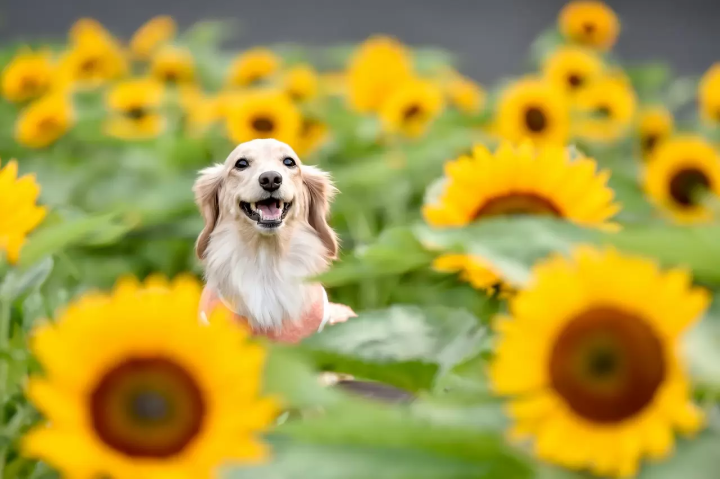
Photo by Pixta
Japan's profound adoration for dogs is unparalleled, evident in the nation's array of dog-friendly facilities and parks that warmly welcome these beloved companions. Among the most popular dog-friendly destinations in Japan are:
- Showa Kinen Park in Tokyo
- Komazawa Olympic Park in Tokyo
- Hitachi Seaside Park in Ibaraki
- Matsudayama Herb Garden near Tookyo
- Satoyama Garden Yokohama
- Yamanakako Hana no Miyako Park near Mt. Fuji
- Gunma Flower Park
- Moominvalley Park Metsa Village in Hanno, Saitama
These scenic and welcoming parks offer fantastic opportunities for dog owners to enjoy quality time with their furry companions amidst beautiful surroundings in various regions across Japan.
Enjoy Interacting with Dogs in Japan
If you're a dog lover, do visit some of the places featured above to learn more about Japanese dogs and the culture surrounding them.
Read also
Answer: It's a Shiba!
Tip: If it has a teddy bear-like appearance, reaches the average person's weight, and has thick fur, it's an Akita! If it looks like a fox, comes to the average person's knee, is not as fluffy, has sharp pointed ears and features, and looks cheeky, it is most likely a Shiba!
Main image by Pixta
Assistant editor at MATCHA since 2023, Kate is a photographer who enjoys traveling Japan's hidden gems and adventuring off the beaten path. Living in Japan since 2018, she has traveled across different areas of Japan. From indulging in Aomori’s apple pies and fiery festivals to exploring the quaint charm of Nagasaki’s cat-filled streets she is always searching for new areas full of atmospheric beauty, festivals, and seasonal events to capture on camera.






























![[2026] Top 5 Strawberry Picking Spots in Tokushima, Naruto| Farms and Access Guide for January to May](https://resources.matcha-jp.com/resize/720x2000/2025/03/06-227165.webp)



